Spring 2013 Newsletter
Published on March 29th, 2013
caps_spring_nl_2013_final_rev_5_13.pdf

TABLE OF CONTENTS
Patriotic Americans Fight Amnesty Again
By Joe Guzzardi, CAPS Senior Writing Fellow
The gloves are off again. Patriotic Americans find themselves in the midst of yet another battle to save the nation from an amnesty that would create disastrous fiscal and environ- mental consequences.
CAPS Ads Target Pro Amnesty Senators
Since January when a new amnesty proposal was put forth by what’s been billed as a bi- partisan effort led by four Democratic and four Republican senators, CAPS has been working full throttle to oppose legalizing the estimated 11 million people who are in the country illegally.
"Baby Bust’ Blues, Or How I Learned to Stop Worrying and Love the Population Bomb
By Leon Kolankiewicz, CAPS Senior Writing Fellow
What planet does he live on? I found myself wondering in recent weeks. At every turn, it seemed, I encountered one Jonathan V. Last, senior writer at The Weekly Standard , insisting that America is heading over a demographic cliff because we’re not making enough babies. And the masters of the media were listening.
Short on Water—Again
After a recent federal report was released, U.S. Interior Secretary Ken Salazar warned that Arizona, California, Colorado, New Mexico, Nevada, Utah and Wyoming can expect less water from the Colorado River. These seven states rely heavily on the river for agriculture, the biggest water consumer in the West, as well as for residential use.
CAPS Welcomes New Board and Advisory Board Members
Every day we hear from Californians like you who are proud of, and cherish the beauty of, our “Golden State.” In the same breath, we also hear your deep sense of loss and a shared conviction that we must stop the relentless population growth degrading our quality of life.
Calling All Californians—Former and Current
Every day we hear from Californians like you who are proud of, and cherish the beauty of, our “Golden State.” In the same breath, we also hear your deep sense of loss and a shared conviction that we must stop the relentless population growth degrading our quality of life.
Tackling the Taboo; Leading environmental activists, scholars take on population in new book
By Leon Kolankiewicz, CAPS Senior Writing Fellow
When it comes to human overpopulation and the war it is waging on nature, the American environmental establishment has been AWOL for several decades. Now comes a refreshing new anthology published by the University of Georgia Press that seeks to remind environmentalists of all that is at stake and make them reconsider their dereliction of duty.
Patriotic Americans Fight Amnesty Again
By Joe Guzzardi, CAPS Senior Writing Fellow

The gloves are off again. Patriotic Americans find themselves in the midst of yet another battle to save the nation from an amnesty that would create disastrous fiscal and environ- mental consequences.
Our 2006 and 2007 victories were hard fought but successful. This time around, emboldened by the 2012 November election results, immigration advocates are more demanding, better organized and have deeper pockets.
One thing is certain: amnesty proponents never give up. Since the 1986 Immigration Reform and Control Act, six additional legislative amnesties have been passed that granted amnesty to at least 3 million illegal aliens. As a result, federal, state and local governments have absorbed—to the point of bankruptcy in some California cities—heavy fiscal and tax burdens.
Each of these seven amnesties opened up avenues for chain migration that have compounded
the nation’s population and social woes, including American job displacement.
During the 2007 McCain-Kennedy amnesty debates, the Heritage Foundation estimated that amnesty would cost taxpayers $2.5 trillion in the first ten years. The Foundation now calculates that the fiscal impact of this year’s “Gang of Eight” amnesty would be even higher. The Federation of Americans for Immigration Reform sets the annual expense directly related to education, health care and law enforcement at $100 billion.
The adverse consequences of unchecked immigration are obvious, and the motives of those who drive it, ignoble. Pandering politicians, cheap-labor-lobbying corporations, biased media and elitists have combined to create what they hope will be the perfect storm: amnesty for 11 million illegal aliens.
Americans need to join in the effort to ensure that the voices of reason—our voices—prevail.
Return To Top | Back to Newsletters
CAPS Ads Target Pro Amnesty Senators

Since January when a new amnesty proposal was put forth by what’s been billed as a bi- partisan effort led by four Democratic and four Republican senators, CAPS has been working full throttle to oppose legalizing the estimated 11 million people who are in the country illegally.
If enacted, the plan would give immediate provisional status for those here illegally to live and work in the United States, thus competing with the estimated 25 million Americans out of work or underemployed.
As we write, CAPS is launching a campaign directed to Sen. John McCain (R-AZ), one of the eight senators driving the amnesty. Arizonans are being asked to contact Sen. McCain and tell him to stop pushing for both a large increase in the number of immigrant workers admitted to the U.S. and an amnesty for 11 million illegal aliens.
With TV, radio and online ads in Phoenix, the campaign is focused on McCain, because he’s been a long-time amnesty advocate and pusher for increasing immigration, despite broad opposition among the constituents in his state to amnesty and increased mass immigration.
The campaign is CAPS’ opening salvo in the debate on this plan. Through it, we plan to further the discussion and show that the plan is against the best interests of American citizens and taxpayers.
In addition to the jobs issue, legalizing millions of people will put additional pressure on already stressed welfare and entitlement programs. The plan also will contribute to more unsustainable population growth, not just by way of legalizing 11 million, but through the impacts of continuing chain migration.
While the amnesty plan will impact all states—because all states are border states now, that is, all face challenges from illegal immigration—California will be disproportionately affected because more immigrants settle here than in any other state.
As the campaign proceeds, other spots will be rolled out, targeted to additional senators supporting the plan, including Sen. Jeff Flake (R), also of Arizona, and Sen. Marco Rubio (R-FL).
Now is a “line in the sand” moment. Amnesty legislation is here. We encourage you to pull out all the stops in calling, writing and emailing elected officials with your concerns about the proposal. Let them know what you think realistic solutions are and what needs to change. The CAPS website has lots of background information, facts and figures, if you need it.
Please don’t stop there. Send letters to the editors of newspapers, and go online and post comments to articles and commentary pieces about immigration. Also, talk with your business colleagues, friends, neighbors and family. Educate them about the issue if they’re not up to speed on it, and ask them to get involved to fight amnesty.
Let us know if you are successful in getting an editorial placed, have a letter to the editor printed or have other good news to share in this fight. We’ll keep you posted through online updates and emails. Let’s fight this amnesty plan!
Return To Top | Back to Newsletters
‘Baby Bust’ Blues,
Or How I Learned to Stop Worrying and Love the Population Bomb*
By Leon Kolankiewicz, CAPS Senior Writing Fellow
What planet does he live on? I found myself wondering in recent weeks. At every turn, it seemed, I encountered one Jonathan V. Last, senior writer at The Weekly Standard, insisting that America is heading over a demographic cliff because we’re not making enough babies. And the masters of the media were listening.
Respectfully. Intently. Earnestly. Rather than falling out of their chairs with guffaws.
The Wall Street Journal, The Daily Beast, The Los Angeles Times, The Weather Channel (!!!) and CBS Sunday Morning, among others, all gave him a forum. Would that they be half as receptive to our message! NewsMax issued a national declaration of war on low birth rates with the headline: “U.S. Battles Declining Fertility.”
Hysteria? Or merely hysterical, as in totally absurd and comical? It is a classic illustration of what the pioneer- ing ecological economist Herman Daly once called “growthmania” on the part of those who worship at the altar of growth, growth forever, growth at all costs.
 Our country has relentlessly added 2 to 3 million people per year for decades —33 million in the 1990s, 27 million in the 2000s. We added more than 100 million in the last 40 years, and in the next 40 to 50 years, according to the U.S. Census Bureau, we will add another 100 million, most of it directly and indirectly from immigration.
Our country has relentlessly added 2 to 3 million people per year for decades —33 million in the 1990s, 27 million in the 2000s. We added more than 100 million in the last 40 years, and in the next 40 to 50 years, according to the U.S. Census Bureau, we will add another 100 million, most of it directly and indirectly from immigration.
Our population continues to grow with no end in sight, if at a some- what slower pace than the breakneck speed of the 1990s, which set a record for the greatest growth of any decade in our history.
This in a country that already—with our current bloated population of 315 million—runs a sub- stantial ecological deficit that is pushing us ever deeper into ecological debt, according to the Global Footprint Network, the Oakland-based think tank that tabulates the ecological footprint of most nations on earth.
According to the Network, if every country in the world were as overpopulated and resource- intensive as the United States, it would take more than four Earths to support us all.
Alas, all we have is one Earth, and all we will ever have is one planet, Buzz Lightyear fantasies of “to infinity, and beyond!” notwithstanding. And one is enough, if we know how to care for it. Part of caring for it is having the collective wisdom to live within limits, including limiting the size of our families and population. But growthmaniacs like Jonathan Last deny that there are any limits to growth that the infinitely clever human mind can’t overcome, as long as government doesn’t stifle individual initiative and ingenuity.
Unfortunately, all too many delusional people deny a simple, profound truth: that all we have is one planet at our disposal, and if we continue to dispose of it as we have been, all that will be left eventually is a wasteland filled with weeds, trash and toxics.
Human beings are rapidly and inexorably degrading the biosphere that the entire human economy resides within and depends upon utterly in count- less ways. We are busily sawing off the limb upon which the entire human enterprise rests—degrading and squandering the “natural capital” that makes sustainable economic prosperity possible.
In his Wall Street Journal article, Mr. Last channels the late economist and guru of growth, Julian Simon, when he claims that “…growing populations lead to increased innovation and conservation. Think about it: Since 1970, commodity prices have continued to fall and America’s environment has become much cleaner and more sustainable—even though our population has increased by more than 50%. Human ingenuity, it turns out, is the most precious resource.”
This is a whopper. But like Julian Simon, who once wrote an outlandish article in the journal Science entitled, “Population, Resources, Environment: An Oversupply of False Bad News,” Last is deft at spinning whoppers that are partially true. Thanks to the efforts of environmentalists (fought every step of the way by polluters), it is indeed true that our air and water are cleaner, in general, than they were 40 years ago; there is also more land set aside as national parks, wildlife refuges and wilderness areas. These are achievements worth celebrating.
Commodity prices—think gasoline at the gas pump—did fall from 1970 to 2000, but in the 2000s, as author Chris Clugston has shown in his compelling new book, Scarcity, prices for almost all raw materials have increased sharply. Clugston concludes that Americans mistook temporary abundance of nonrenewable natural resources (NNRs) like the fossil fuels and metals as permanent sufficiency. It’s a miscalculation with monumental consequences.
“More sustainable?” One would have to be a deluded ignoramus, or dare I say, an ecologically challenged economist, to think so.
We have fewer wetlands, fewer free-flowing rivers, less available surface and groundwater, less open space, fewer remaining fossil fuels and high grade metal and mineral ores, fewer arable soils, fewer healthy and more diseased forests, more wildfires and droughts, record temperatures, fewer fish, less de facto wilderness, more threatened and endangered species, more harmful invasive species, higher carbon dioxide emissions, and more crowded parks and beaches than ever before. The climate is becoming more erratic; sea level is rising, and the oceans are becoming more polluted and acidic. I could go on, but any one of these conditions is not sustainable.
Before he died in 1998, Julian Simon and I were both interviewed by one of National Public Radio’s science reporters for a segment on the topic of carrying capacity for The Morning Edition. I later spoke with Simon at a news conference in the Capitol at which he released a study arguing for more immigration and faster U.S. population growth.
In private conversation afterwards, among other things, he also let on that he thought the idea that man- made CFCs were harming the ozone layer was a bunch of nonsense. He apparently knew better than the two scientists at the University of California-Irvine—Sherwood Rowland and Mario Molina—who had just been awarded the Nobel Prize in Chemistry. They shared the Nobel for working out the chemical reactions by which chlorofluorocarbons consumed ozone molecules in the stratosphere, which protect us and all other organisms from damaging ultraviolet-B radiation. But it was all nonsense, Simon assured me.
Julian Simon once bragged: “We now have in our hands—in our libraries, really—the technology to feed, clothe, and supply energy to an ever-growing population for the next 7 billion years.” Rarely has rank hubris ever been so distilled!
Physicist Al Bartlett looked into Simon’s claim. Bartlett calculated that after just 17,000 years (only 0.00024% of 7 billion years), a population growing at the underwhelming but steady rate of 1% annually—about equal to the U.S. growth rate—would produce as many humans as atoms in the known universe.
Bartlett also quipped that our de facto national creed has morphed from “In God We Trust” to “In Growth We Trust.” Treating a slight dip in the birth rate as a cause for alarm rather than a tentative step in the right direction is an expression of this creed.
Bartlett said that Julian Simon belonged to what amounted to a “New Flat Earth Society,” because only a flat Earth extending infinitely in all directions could accommodate infinite human expansion. I hereby propose that for his recent contributions to such delusions of grandeur, Jonathan Last be accorded honorary membership in the New Flat Earth Society.
* With apologies to Stanley Kubrick, Peter Sellers and the classic Cold War era film Dr. Strangelove.
Leon Kolankiewicz is an environmental scientist and CAPS advisor. He was the vice president and coordinator of Carrying Capacity Network (CCN) in the late 1990s, when University of Colorado physics professor Al Bartlett and University of Maryland ecological economics Professor Herman Daly served on the CCN Board of Directors.
Return To Top | Back to Newsletters
 After a recent federal report was released, U.S. Interior Secretary Ken Salazar warned that Arizona, California, Colorado, New Mexico, Nevada, Utah and Wyoming can expect less water from the Colorado River. These seven states rely heavily on the river for agriculture, the biggest water consumer in the West, as well as for residential use.
After a recent federal report was released, U.S. Interior Secretary Ken Salazar warned that Arizona, California, Colorado, New Mexico, Nevada, Utah and Wyoming can expect less water from the Colorado River. These seven states rely heavily on the river for agriculture, the biggest water consumer in the West, as well as for residential use.
Demand for Colorado River Basin water will greatly outstrip supply in the decades ahead, ac- cording to the study. In less than 50 years, there will be an estimated 3.2 million acre-feet short- fall from the Colorado River. This is about five times more than what’s used in Los Angeles now.
The Secretary called for more planning, which might include greater conservation and desalination, he said, to try to address the future shortfall.
Climate change will contribute to the crisis, be- cause of higher evaporation rates and decreased snowpack, both of which will contribute to drought. Population growth will put even more pressure on water supplies. In fact, increasing population was viewed as the prime driver of water demand by the study’s authors.
Interestingly, according to the L.A. Times, which reported on the story, some environmental groups, apparently operating in denial, said the report overestimated population growth and, thus, they believed the estimates for future water demand were inflated.
California’s population alone, currently at almost 39 million, is expected to grow to 50 million by 2049 and to 52.7 million by 2060, according to California’s Department of Finance. That’s nearly a 40 percent increase from the state’s population now.
The estimated 15.4 million increase between 2010 and 2060 is greater than the current population of either Illinois or Pennsylvania. Put another way, currently a state with 15.4 million people would make it the fifth largest in the United States.
Conservation and technology may offer some mitigation, but any real planning for the coming water crisis has to include discussion on how to achieve sustainable populations in the Western states and throughout the country. Otherwise, any gains achieved through smarter water approaches in farming and by more water- conscious consumers will be lost to the demands of more and more people.
Return To Top | Back to Newsletters
CAPS Welcomes New Board and Advisory Board MembeRs
For the first time since the dinosaurs disappeared, humans are driving animals and plants to extinction faster than new species can evolve. International Union for the Conservation of Nature
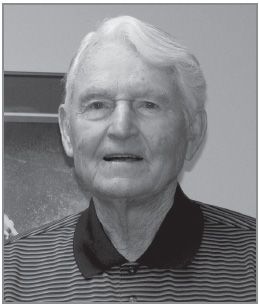 Charles K. (Kim) Fletcher, Jr. has been elected to the CAPS Board of Directors. He was born in Hollywood and moved to San Diego with his family during the middle of the Depression.
Charles K. (Kim) Fletcher, Jr. has been elected to the CAPS Board of Directors. He was born in Hollywood and moved to San Diego with his family during the middle of the Depression.
Kim graduated from Stanford University and served in the U.S. Army in World War II. He joined Home Federal as a management trainee in 1950 and was chairman of the board when he retired in 1992. He also served as director of the Federal Home Loan Bank of San Francisco. Kim is currently president of Investors Leasing Corporation, a real estate investment company.
Active in many nonprofit organizations, Kim is a member of the San Dieguito Boys & Girls Clubs and a lifetime member of The Salvation Army Advisory Board. A founding director of the San Diego Economic Development Corporation, Kim also was a trustee of the University of San Diego and served a two-year term as president of the United Way of San Diego.
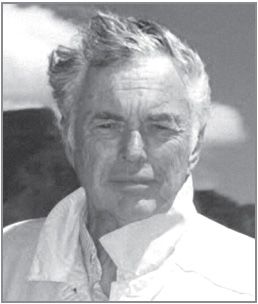 Charles Westhoff, Ph.D., emeritus professor of Demographic Studies and Sociology at Princeton University, has joined the CAPS Advisory Board of Directors.
Charles Westhoff, Ph.D., emeritus professor of Demographic Studies and Sociology at Princeton University, has joined the CAPS Advisory Board of Directors.
A former director of the Office of Population Research, Charles has studied fertility and family planning in the United States and developing countries, as well as population policy. He served as director of the Office of Population Studies at Princeton and has written several books, including Family Growth in Metropolitan America and The Later Years of Childbearing.
Charles is a fellow of the American Academy of Arts and Sciences and a member of the Institute of Medicine of the National Academy of Sciences. He was executive director of the Commission on Population Growth and the American Future in Washington, D.C. and was on the Committee on Population of the National Academy of Sciences.
Additionally, Charles has been a consultant to the World Fertility Survey, UNESCO, the UN Population Division Demographic and Health Surveys, and the African Development Bank. He earned a Ph.D. at the University of Pennsylvania.
 The CAPS Advisory Board of Directors also welcomes Keith Mautino, who currently is a trustee of the Santa Barbara Courthouse Legacy Foundation and of the Pacific Asia Museum in Pasadena.
The CAPS Advisory Board of Directors also welcomes Keith Mautino, who currently is a trustee of the Santa Barbara Courthouse Legacy Foundation and of the Pacific Asia Museum in Pasadena.
Keith attended Occidental College, Westmont College and UCSB graduate school in Asian Stud- ies. He has been a trustee of the Santa Barbara County Horticultural Society and a trustee and Secretary of the Santa Barbara Historical Museum.
Formerly a Santa Barbara County Historic Landmarks Commissioner, Keith also serves on various committees for The Lotus Society, Ganna Walska Lotusland, Community Arts Music Association Legacy Society and the Westmont Museum Arts Council.
In his professional career, Keith has been a fine art dealer and Asian art specialist for more than 25 years.
Return To Top | Back to Newsletters
Calling All Californians—Former and Current
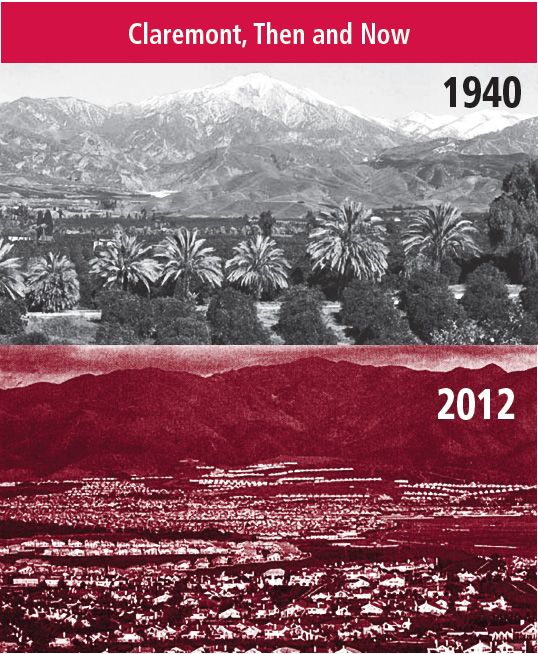 Every day we hear from Californians like you who are proud of, and cherish the beauty of, our “Golden State.” In the same breath, we also hear your deep sense of loss and a shared conviction that we must stop the relentless population growth degrading our quality of life.
Every day we hear from Californians like you who are proud of, and cherish the beauty of, our “Golden State.” In the same breath, we also hear your deep sense of loss and a shared conviction that we must stop the relentless population growth degrading our quality of life.
CAPS listened. In response, we’ve launched a “then and now” project, “The California We Are Losing: Views of Our Golden State’s Transition from Pristine to Imperiled.” Now, we need your help.
The goal of this project is to increase awareness about relentless population growth’s long-term effects on special places near and dear to our hearts. We hope that a visual juxtaposition of yesterday’s and todays changed landscapes will help inspire public action to help save our Golden State from further irreversible environmental degradation. Previous “then and now” projects have rarely touched on the driving issue—population. CAPS will be among the first to focus on the more honest, and actionable, prism of population growth.
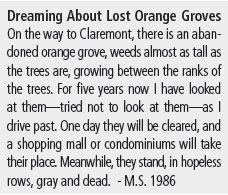 Your memories and personal/family archives are needed to illustrate the changes in our state’s special places through the 20th century to today. Please send CAPS your photos and/or memories of special places you love, with evidence of how they have changed.
Your memories and personal/family archives are needed to illustrate the changes in our state’s special places through the 20th century to today. Please send CAPS your photos and/or memories of special places you love, with evidence of how they have changed.
Please forward your submissions to CAPS in one of the following ways:
1. Email [email protected] (please attach photos in jpg format).
2. Mail to:
CAPS
1129 State Street, Suite 3D
Santa Barbara, CA 93101
(please include your name and address on the back of any photos so that we may return them to you).
Your materials may be featured on the new CAPS website launching soon, in a documentary on YouTube and/or through CAPS’ social media outlets. Funding permitting, we may develop a television campaign to elicit more interest, action and support.
Thank you for joining us help a place we so dearly love.
Return To Top | Back to Newsletters
Tackling the Taboo
Leading environmental activists, scholars take on population in new book
By Leon Kolankiewicz, CAPS Senior Writing Fellow
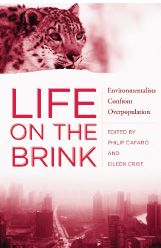 When it comes to human overpopulation and the war it is waging on nature, the American environmental establishment has been AWOL for several decades. Now comes a refreshing new anthology published by the University of Georgia Press that seeks to remind environmentalists of all that is at stake and make them reconsider their dereliction of duty.
When it comes to human overpopulation and the war it is waging on nature, the American environmental establishment has been AWOL for several decades. Now comes a refreshing new anthology published by the University of Georgia Press that seeks to remind environmentalists of all that is at stake and make them reconsider their dereliction of duty.
In Life on the Brink: Environmentalists Confront Overpopulation, coeditors Phil Cafaro and Eileen Crist marshaled a veritable who’s who of environmental and conservation leaders, scholars and activists in a collection of essays that tackles this touchy topic head on.
Cafaro is a professor of philosophy at Colorado State University, president of the board of Progressives for Immigration Reform and the author of two prior books on environmental ethics. Crist is an associate professor in the Department of Science and Technology in Society at Virginia Tech and author of Earth Ethics in an Age of Crisis.
In addition to Cafaro and Crist, more than two dozen of today’s best thinkers on environmental and population issues contributed to Life on the Brink. Among them are Albert Bartlett, professor emeritus of physics, University of Colorado; Joseph Bish, Population Institute; Anne and Paul Ehrlich, authors of the groundbreaking The Population Explosion and many other books; and Dave Foreman, cofounder of Earth First!
Former three-term Colorado governor, Richard Lamm, also contributed to the book, along with bioregionalist and fellow at the Post Carbon Institute, Stephanie Mills; William Ryerson, president of the Population Media Center; Captain Paul Watson, cofounder of Greenpeace and founder of the Sea Shepherd Conservation Society; and Don Weeden, executive director of the
Weeden Foundation and a 25-year veteran of work in the international population field.
As CAPS members know all too well, population isn’t ignored because it’s boring or passé, but because it touches on a plethora of compelling, but emotionally fraught and politically divisive is- sues, including sex, contraception, abortion, immigration, ethnicity, race, religion, culture, language and limits to growth. While the environmental establishment opted to avoid population and being called nasty names, it cannot avoid over- population’s many environmental impacts.
As the most populous state in America, as a place blessed with phenomenal natural beauty and rich biodiversity, and as one of the cradles of the conservation movement in America (the Sierra Club was founded here in 1892), it is not surprising that California has generated more than its fair share of population activism. And indeed, no less than seven of the 26 contributors to Life on the Brink are or were based in California and/or are associated with CAPS.
In their foreword to the book, Paul Ehrlich and Anne Ehrlich of Stanford University contend that, “If projected rates of population and economic growth are fulfilled in the next several decades, safeguarding Earth’s precious store of living natural capital, and thereby permitting the support of further billions, will be virtually impossible.”
In his essay “Confronting Finitude,” Richard D. Lamm, a member of CAPS’ advisory board, writes: “The hardest challenge in public policy is to change a policy that has been successful.” Lamm cites immigration as just such a policy. Why change it then, he asks. Because the world has changed, he answers.
“Americans now live in a cash-wage industrial society with no more virgin land,” Lamm writes. And this new reality compels us to “no longer blindly assume that all immigrants benefit America.” Lamm goes on to urge Americans to urgently reconsider their public policies, which falsely assume infinite resources in a finite world.
In “Overpopulation versus Biodiversity: How a Plethora of People Produces a Paucity of Wild- life,” I examine the increase in human population and the corresponding decrease in wildlife in North America, concluding that “Our species is unique, because here and now only we have the ability to destroy, or to save, biodiversity. Limiting human population will not guarantee success, but not doing so means certain failure.”
Life on the Brink is recommended for all who truly want to save an America and an Earth worth living on. As coeditor Phil Cafaro cogently writes, the contributors to this anthology:
…are committed to the idea that the human race can be more than an ever- gaping mouth swallowing the world. We want to work toward a future in which humanity limits its appropriation of the biosphere, and wild nature continues to flourish. In this way, I believe, we stand up for what is best in humanity.
Life on the Brink: Environmentalists Confront Over- population can be ordered at Amazon.com or the University of Georgia Press.
Leon Kolankiewicz is a CAPS advisory board member and CAPS senior writing fellow. A professional wildlife biologist and environmental planner, Kolankiewicz is the author of Where Salmon Come to Die: An Autumn on Alaska’s Raincoast and also contributed to Life on the Brink.
Return To Top | Back to Newsletters





